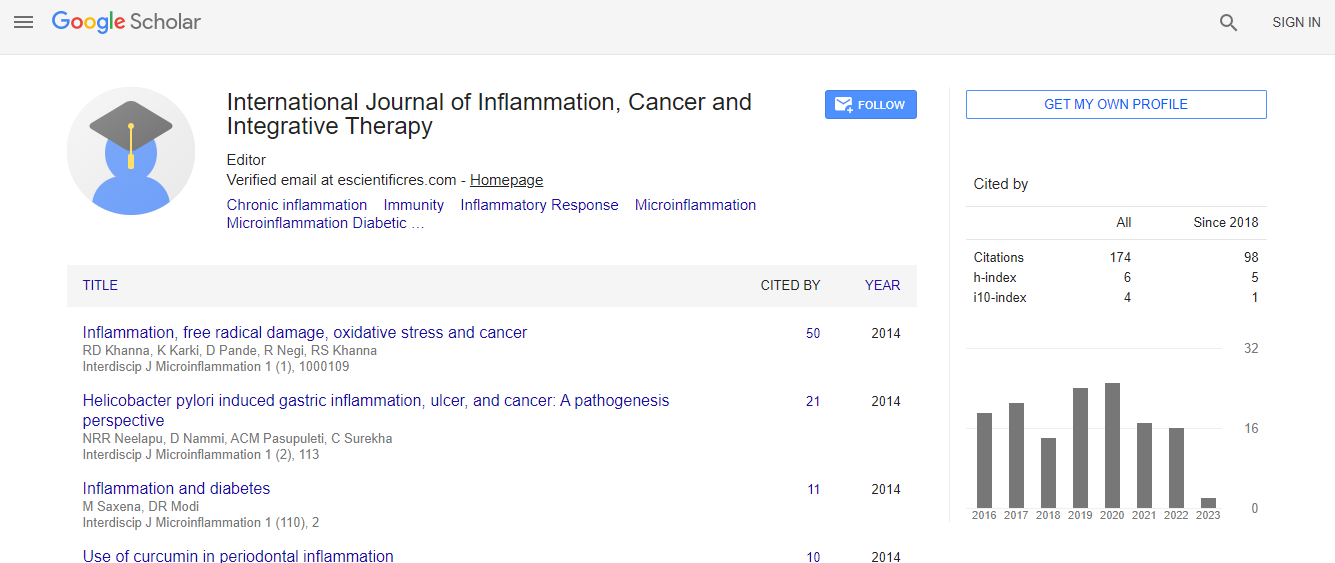Research Article
Anti-Inflammatory Effects of Bullatine A on LPS-Induced RAW264.7 Cells by Endoplasmic Reticulum Stress
Ren W1, Zhou H1, Xian-Ju H1* and Gao Y2
1School of Pharmacy, South-central University for Nationalities, Wuhan, P.R. China
2Department of Pharmacology & Toxicology, Beijing Institute of Radiation Medicine, Beijing, P.R. China
- *Corresponding Author:
- Xian-Ju Huang
School of Pharmacy, South-central University for Nationalities
Wuhan, P.R. China
Tel: 0086-27-67841196
Fax: 0086-27-67841196
E-mail: huangxianju1972@aliyun.com
Received date: November 04, 2014; Accepted date: December 08, 2014; Published date: December 10, 2014
Citation: Ren W, Zhou H, Xian-Ju H, Gao Y (2014) Anti-Inflammatory Effects of Bullatine A on LPS-Induced RAW264.7 Cells by Endoplasmic Reticulum Stress. Interdiscip J Microinflammation 1:123. doi: 10.4172/2381-8727.1000123
Copyright: © 2014, Xian-Ju H, et al. This is an open-access article distributed under the terms of the Creative Commons Attribution License, which permits unrestricted use, distribution, and reproduction in any medium, provided the original author and source are credited.
Abstract
Objective: Bullatine A (BLA), a diterpenoid alkaloid of the genus Aconitum, possesses anti-rheumatic, antiinflammatory and anti-nociceptive effects. The mechanism underlying the anti-inflammatory effect was further examined using murine RAW264.7 macrophage cell lines in vitro.
Methods: The effects of BLA on cell apoptosis/death and endoplasmic reticulum (ER) stress in RAW264.7 cells induced by lipopolysaccharide (LPS) were examined. The effects of BLA on pro-inflammatory cytokines interleukin-6 (IL-6) as well as nitric oxide (NO), intracellular reactive oxygen species (ROS) and Ca2+ in RAW264.7 cells induced by LPS were examined.
Results: The results showed that BLA protected RAW 264.7 cells against apoptotic death induced by LPS via attenuated the production of pro-inflammatory factor interleukin-6 (IL-6), nitric oxide (NO), intracellular reactive oxygen species (ROS) and Ca2+ in LPS-treated RAW 264.7 cells.
Conclusion: The results demonstrated a significant anti-inflammatory and ER stress inhibitory properties of BLA. It also indicated that it may have beneficial therapeutic effects in the treatment of conditions associated with an overproduction of inflammatory cytokines, including pain, inflammation, cancer, and neurodegenerative diseases.

 Spanish
Spanish  Chinese
Chinese  Russian
Russian  German
German  French
French  Japanese
Japanese  Portuguese
Portuguese  Hindi
Hindi 
